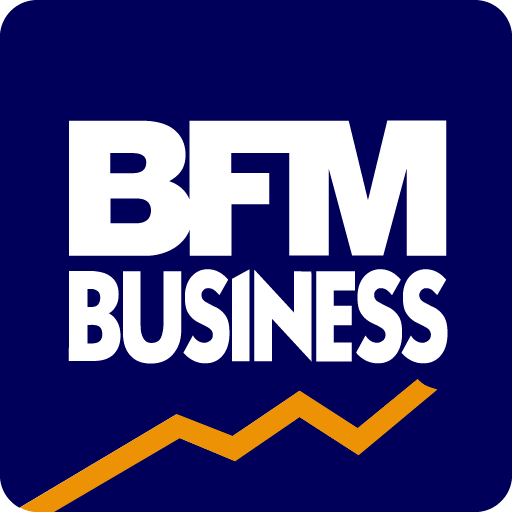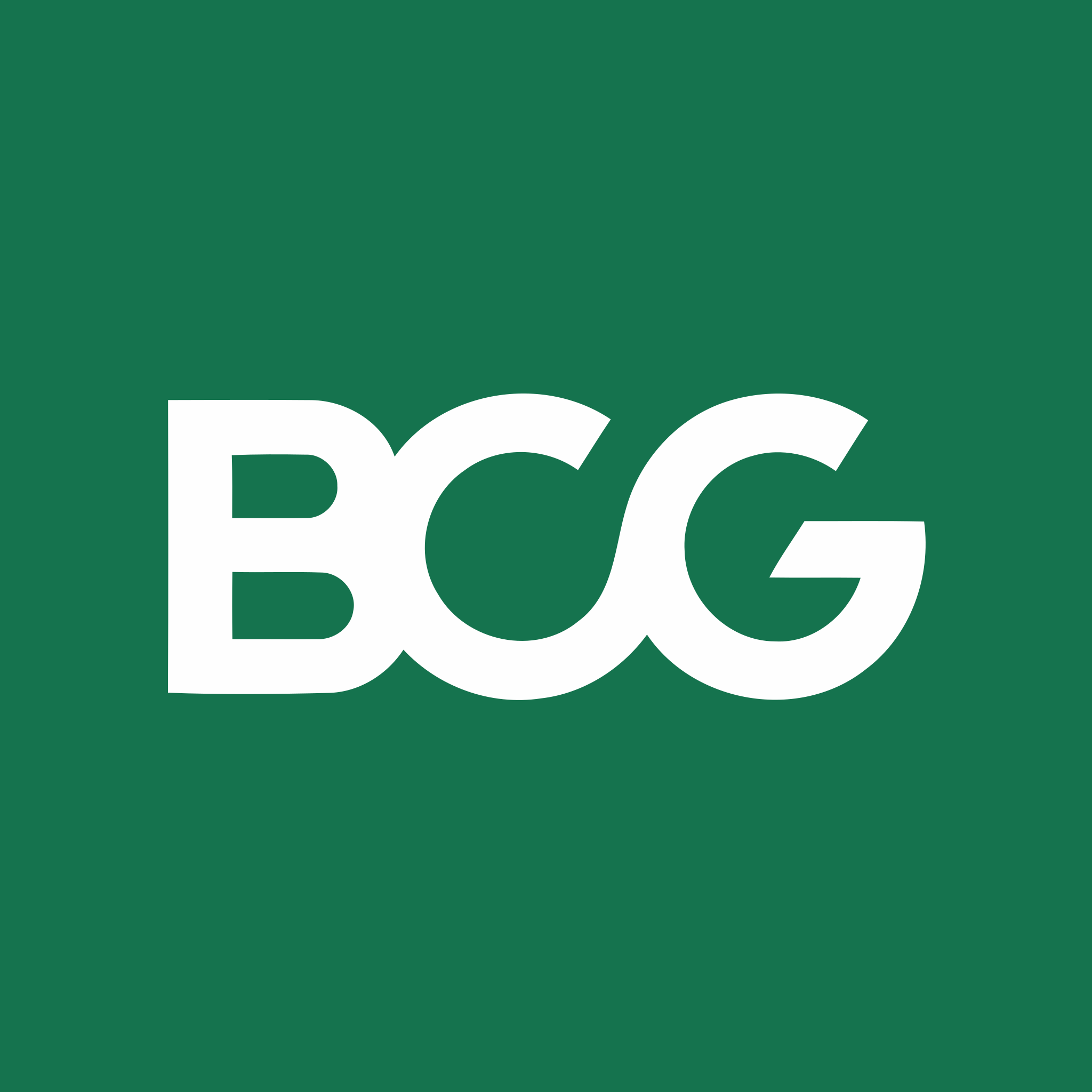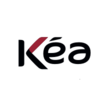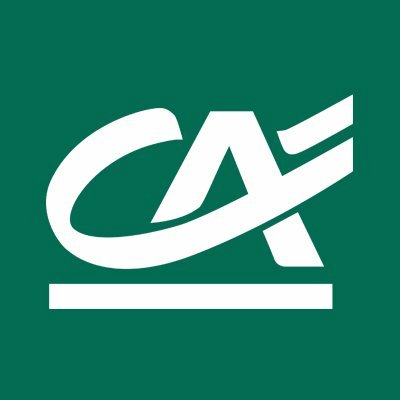Summary of our market study
French street lighting market estimated at €2.3 billion
The global street lighting market is being driven by the integration of intelligent lighting solutions. Aging infrastructures are in need of renewal, and many players are developing energy-efficient technologies.
Worldwide, the LED segment of the street lighting market is valued at $10 billion and growing at over 5% a year.
In France, over 10.5 million light points are installed, 25% of which are over 25 years old. 60% are sodium vapor lamps and only 15% LED systems. Renewal will deliver significant energy savings, estimated at between 40% and 70%.
Lighting energy consumption by local authorities represents 48% of their electricity expenditure and 18% of their overall energy expenditure.
Safety and night-time visibility are central concerns for over 90% of French residents.
Market players
- Comatelec Schreder is a leading manufacturer of lighting equipment
- Eclatec is another key player in the field of lighting solutions
- Valmont France, a recognized name in the manufacture and design of support structures for public lighting.
- Ragni specializes in the creation of contemporary and traditional lighting fixtures
- EDF extends its services to lighting as part of its broader commitment to energy solutions.
- Spie plays a key role in building the infrastructure required for public lighting
- Ineo, a subsidiary of Engie Energie Service, is a key contributor to intelligent lighting.
- Citéos, a Vinci Energies brand, focuses on urban development through intelligent public lighting solutions
to understand this market
Detailed content of our market study
 Inforamtion
Inforamtion
- Number of pages : 35 pages
- Format : Digital and PDF versions
- Last update :
 Summary and extracts
Summary and extracts
1 Market overview
1.1 Presentation of the public lighting market
The public lighting market brings together various players and companies whose aim is to provide lighting for roads and public spaces, whether for the comfort or safety of users. Several activities are related to this market: supply of lighting equipment, supply of energy, construction of appropriate infrastructures.
There are four types of companies operating in the market:
- Public decision-makers who, through tenders, determine the market demand (municipalities and communities).
- Infrastructure construction and service providers (e.g., Spie)
- Lighting equipment suppliers (e.g. Comatelec Schreder)
- Energy suppliers (e.g. EDF)
The French public lighting market is mainly drived by the network maintenance. This is followed by spending on the renewal of installations and then on energy consumption.
The French street lighting market is faced with two main challenges: economical and ecological. Energy costs are becoming increasingly expensive for local authorities, and they have to deal with criticism of greenhouse gas emissions and light pollution.
Many actors are now focusing on the renewal of the existing lighting stock thanks to increasingly innovative intelligent lighting solutions: low energy lamps, LEDs, connected lighting, lighting plans, etc. All these initiatives are part of the "smart cities" trend, which suggests that the French street lighting market will increase in value in the short and medium term.
Local authorities have recorded a net loss in their local finances this could have an impact on future public spending, including street lighting. Despite this, the health crisis has largely contributed to reinforcing certain emerging trends, such as the renewal of the lighting stock in favor of LEDs and the extinction of lights during off-peak hours of the night.
1.2 Street lighting around the world
Worldwide, there are approximately *** million street lighting fixtures, with **% in Asia, **% in Europe and North America, and **% in South America. The global lighting density, in terms of urban population for each light point, averages about **, ranging from * in European countries to more than ** in Asia-Pacific. [***]
Number of light points by country World, ****, in millions Source: ****
Given the local dimension of street lighting projects, it is difficult to have an accurate estimate of the global market. Nevertheless, the LED segment of the street lighting market was worth US$*.** billion in ****, and is expected to reach US$**.** billion by ****, growing at a CAGR of *.**% between **** and ****. [***].
Global Street Lighting Market World, ****-*****, US$ billion Source: ****
1.3 A French market with good growth prospects
According to data collected by the AFE, public lighting in France will represent an average turnover of *.* billion euros in ****. This figure includes approximately * billion euros spent on maintenance, approximately *** to *** million euros invested in the renewal of the existing infrastructures and over *** million euros attributable to energy consumption.
Breakdown of local authority spending on public lighting France, ****, in € million Source: ****
there are therefore three sub-markets:
The maintenance and renovation market, which is stable The renewal market, which depends on contextual, political and economic changes The energy consumption market
The public lighting market is expected to grow in the short term, driven by the renewal of the installed base and the massive arrival of LEDs. by ****, growth will be driven by intelligent lighting solutions and the smart city.
AFE estimates that the sector will see an increase of *.* million light points in **** compared to its **** level, leading to a total of ** million light points. The number of light points is then expected to decline sharply by **** to a level below that of ****. This is due to a combination of the following factors: the fight against light pollution, rationalization of urban lighting points, increased energy costs, and a long-term decrease in local ...
1.4 The impact of the health crisis on local government budgets
The street lighting market depends on local government spending. With the Covid-** health crisis, local finances have been greatly impacted. The government estimates that all local authorities have suffered a drop in tax revenues of *.* billion euros, a drop in tariff resources of *.* billion euros, to which must be added all the additional expenses related to the crisis. In total, local governments are recording a net loss of *.* billion euros compared to ****. [***]
Nevertheless, the shutdown of the cities' economic activities has led to a decrease of about **% in the cities' electricity consumption, and therefore in energy-related expenses. [***]
The health crisis also confirmed certain trends. The containment period has allowed some cities to test the cutting of public lighting during certain hours of the night, and ultimately to adopt it. This is the case, for example, of the city of Orsay, which turned off its streetlights from ** p.m. to * a.m. [***]
The impact of Covid-** on the budgetary policy of local authorities can therefore be double-edged. While it is certain that cities will be extremely careful about their spending in the years to come, and thus consider reducing the amount of tenders for the management of their lighting, the impact of ...
2 Analysis of the demand
2.1 Aging lighting stock requiring renewal
An aging lighting stock
Source: ****
In ****, of the * million light points, **% of the lighting stock was composed of sodium vapor lamps, **% in mercury vapor lamps and about **% of other lamps (***). [***]
Despite this, the fleet remains aging. Between **** and ****, nearly **% of public lighting fixtures should have been replaced due to European regulations and new electrical and photometric performance of sources and fixtures. It should be noted that the average renovation rate for public lighting is around *% per year. [Despite a significant effort to replace mercury vapor lamps, after the entry into force in **** of a new stage in the banning of energy-guzzling lamps (***),still **% of the lamps are mercury vapor lamps in ****, or about ***,*** lamps, mainly in rural communities
In ****, **% of the park is still composed of sodium vapor lamps, **% of the park is now composed of LEDs, **% is still mercury vapor lamps, *% of metal halide and *% of other lamps. [***]
Composition of public lighting points France, ****, in % Source: ****
According to a study from AFE, the average age of the public lighting stock is ** to ** years in **** and of the **.* million existing light points, **% of the luminaires in service are over ** years old.
The impact of replacement
Source: ****
Older generation bulbs and equipment ...
2.2 The opinion of the French: an indirect lever
Public lighting: a central role for French citizens Role of public lighting France, ****, in Source: Ipsos For the French, public lighting has a significant role, particularly in terms of safety: **% of respondents consider that public lighting is important to enhance safety conditions in the evening and at night, and **% of respondents consider that it is important to make motorized travel (***). * French person out of * considers that his or her street is not lit enough, according to theAFE. However, the feeling of satisfaction remains the majority: according to the IPSOS survey, a very large majority of the people questioned in the survey (***) are satisfied with the quality of public lighting where they live Modernization of the park Importance of modernizing the lighting stock France, ****, in % Source: Ipsos To reduce electricity consumption related to public lighting in their community, switching off public lighting is not the best solution according to a majority of respondents (***). The points of improvement for public lighting cited are: energy consumption is too high (***).[***] Public opinion: what areas for improvement? Preferred solutions for optimizing public lighting France, ****, in Source: Ipsos among the various alternatives for optimizing street lighting, the French prefer the installation of highly energy-efficient light sources (***).
2.3 Growing environmental concerns
Nuisance and light pollution
Over-lighting leads to nuisance and light pollution. For small communities in particular, public lighting is the primary source of nuisance due to obsolete equipment. Atmospheric pollution is also noted, such as the presence of light halos. There are also physical nuisances for living beings (***) as well as nuisances impacting the quality of life of users. At night, artificial light disrupts our biological clock and affects nocturnal fauna and flora. Some animals at night become more vulnerable because they are visible to their predators.
Regulations are emerging to address this issue
The decree of December **, **** aims to reduce light pollution by reducing the duration of illumination: it includes some rules set during the previous order such as the extinction of lights in windows and businesses as well as the reduction of the duration of lighting.it includes some of the rules set in the previous order, such as the extinction of lights in shop windows and shops, as well as the lighting of building facades at *am and those of offices * hour after the end of the activity. Some measures have been added concerning the lights illuminating the heritage and the parks and gardens accessible to the public ...
2.4 Demand fluctuates slightly
The annual amount of the market, about * billion euros per year, is equal to the annual flow of spending by the communities, i.e. the annual flow of tenders. Since cities renew their tenders regularly (***), the amount of each tender makes it possible to estimate the market by contract revenue, i.e., by the community's annual expenditure.
Fluctuations in the annual amounts of the calls for tenders may appear due to the heterogeneity of the communities issuing them or to the arrival of new non-recurring contracts. For example, certain large tend ers may cause the total annual amount of tenders issued to fluctuate. For example, Evesa won the tender launched by Paris in **** and manages the Parisian fleet of ***,*** light points for a total amount of *** million euros, or about ** million per year[***].
Other phenomena can have an impact on the annual market flow. For example, the ban on energy-intensive lamps accelerates the usual rate of renewal, creating an additional market. Or the extension of the network, at a more or less constant growth rate over the last ten years, creates a small additional demand[***].
Despite their existence, these phenomena have little impact on the estimated annual flow of the public ...
3 Market structure
3.1 Local authorities, central players
The central role of local authorities
The departments are responsible for the lighting of departmental roads and, where applicable, of public works, sites and buildings in their possession. As regards the portions of departmental roads crossing a town, it is the mayor of the commune who is responsible for deciding on the lighting methods. [***] The communes can manage their public lighting either at the communal or inter-communal level, or entrust the management to an energy syndicate.
The development of inter-municipality
The NOTRe law makes it compulsory for communes to be attached to an intermunicipal group. Inter-municipality consists of transferring the management of one or more public services to an inter-municipal structure that has the status of a public establishment of inter-municipal cooperation (***). It allows municipalities interested in building a facility or providing a public service to pool their resources.
the regulations lead to a revision of the departmental plans for inter-municipal cooperation towards larger and larger EPCIs. As of January *, ****, there were *,*** EPCIs with their own tax status, compared to *,*** on January *, ****.
Lighting, a considerable budget for local authorities
Source: ****
For local authorities, lighting consumption is a significant factor, accounting for **% of their electricity consumption, or **% of their consumption of all ...
3.2 Investment in the market by private players through new management methods
Public procurement is the traditional form of investment in public lighting: it consists of all contracts awarded by public bodies to meet their needs. These contracts may or may not be subject to the public procurement code.
For the management of their public lighting, local authorities can choose to entrust it to a syndicate (***) and finally delegate it via a partnership contract or an energy performance contract. These types of contracts allow all or part of the cost of the initial investment to be transferred to the renovation. According to La Gazette des communes, the public lighting market under delegated management has benefited in recent years from two main innovations:
The partnership contract, introduced by the ordinance of June **, ****, which allows a local authority to contractually entrust a private service provider with the partnership contract, introduced by the ordinance of June **, ****, which allows a local authority to contractually entrust a private service provider with the investment and maintenance of a project over a long period of time (***), in return for a rent fixed at the time of signature. This contractual model allows for better control of the overall cost and a guarantee of performance through contractualized maintenance[***] The energy performance contract ...
3.3 The entry of new players disrupts the market
French manufacturers of lamps, luminaires and candelabras, some ** companies employing *,*** people, are just recovering from several dark years. During the period ****-****, street lighting specialists, which represent about a third of the profession, saw their sales go down by about **% before stabilizing at €*.* billion in ****.[***]
Among, the offerers on the public lighting market, we distinguish traditional players, with some examples below:
Schréder offers lighting solutions for pedestrian areas, roadways. The company specializes in intelligent systems that adapt lighting to the presence of passers-by Agora Technologies, and more specifically its subsidiaries GHM and Eclatec, which specialize in public lighting equipment Ragni, which designs and produces public lighting Lacroix Group, European leader in the field of intelligent management of public lighting
Traditional manufacturers are being challenged by the arrival of start-ups with innovative ideas.Faced with this threat, some choose to invest in start-ups. For example, the Lacroix group is now strengthening its position in the smart city market with the acquisition of the Belgian start-up SmartNodes.
Start-ups, bearers of new ideas
Start-ups are distinguishing themselves in the public lighting market in two ways, by offering innovative equipment (***).
The start-up Glowee aims to replace electric street lamps with bacteria that reproduce endlessly ...
3.4 Recycling: a mandatory step
According to AFE, the collection rate in communities (***) in ****, was **% for used lamps and *% for used lighting fixtures. The collection rate target at the end of **** is **% for used lamps and **% for used lighting.
Waste management obligations
In accordance with the circular on the exemplarity of the State and the recommendations of the State Procurement Service (***), local authorities are responsible for their waste until its complete elimination. This service can be economically neutral for local authorities, since the waste is taken care of on their territory by the eco-organization Récylum free of charge. [***] Récylum offers a free recycling service for equipment with collection bins available in the workshop. A punctual intervention on demolition, renovation and maintenance sites is also possible. As LEDs are more and more present on the market, Recylum is already preparing to develop treatment processes to be able to recycle in an optimal way the large quantities of LED lamps that will reach the end of their life in the next few years.
The growing importance of LEDs
LEDs are becoming increasingly prevalent: ** million LED lamps were placed on the market in ****. LEDs accounted for *.*% of the total number of fluorescent lamps and tubes collected in ...
3.5 The evolution of the value chain
Traditionally, the value chain of the public lighting market can be broken down into five links:
The production of equipment, a link in which historical equipment such as Eclatec, Schréder or Philips stand out, but also the new lighting start-ups. Design and engineering, which is often integrated with the rest of the services by major service integrator groups such as Vinci Services, Citeos, Bouygues énergie et service, Engie Solutions, Spie, Citelum and Eiffage. The execution of works, which the major groups and unions can subcontract to local players. Operation and maintenance, the most lucrative part of the process, is mostly managed by large service integrators and unions, even though more and more smart-city start-ups are offering innovative solutions. Finally, the supply of electricity, by traditional suppliers (***).
The emergence of new technologies is profoundly changing the lighting market and increasing the complexity of the sector's value chain with the entry of new players into the market. Utilities typically manage street lighting services, acquiring lamps from manufacturers, developing operation and maintenance services, and defining service level agreements and corresponding remuneration with municipalities. Today, the value chain is changing, with new players entering the market and new partnerships emerging. These include, for example, ...
4 Analysis of the offer
4.1 General presentation of the different products required for the installation of public lighting infrastructures
There are several types of products that are included in the public lighting infrastructure these depend on the equipment and devices used:
Main types of light sources (***):
Fluorescent tubes High pressure mercury lamps High pressure sodium lamps High pressure metal halide lamps Induction lamps LED lamps
Main types of equipment, in relation to the different categories of use (***) :
Open form device with plate Open type device skirt Open form device Closed form device Closed form device for street furniture Closed shape device for bicycle paths Closed cup shaped device Ball shaped device Antique shaped device
Main types of support, in relation to different job categories :
Pole Wall arm Hanging pole Headlight tower pole
Types of electrical systems:
Single line system Dual line system Alternating system Axial system Suspension system
In addition, after selecting a combination of the above equipment to provide street lighting, artificial light is obtained using lamps that differ according to:
The light output, with the same electrical energy consumption The color of the light emitted (***) Color rendering, which indicates the characteristics of a lamp to allow the appreciation of color shades Average life (***) The unit power values that the market offers (***)
Thus, to provide street lighting service, a ...
4.2 The arrival of LEDs
LEDS penetration in the street lighting market World, ****, % Source: ****
In France, the penetration rate of LEDS in street lighting is around **%. by comparison, Japan is at **% according to AD Little.
A functional LED luminaire costs between *** and *,*** euros, this additional cost compared to other technologies leads communities to a global analysis (***). The associated maintenance costs are also lower. These optimizations allow a return on investment of * to * years, according to the French lighting agency.
today, **% of renovations and new installations are done for LEDS sources. Despite being more expensive to set up, the technology seems to have reached its maturity stage, with falling prices and increased reliability in recent years. In addition, the subsidy policies related to energy savings, as well as those related to the opening of data, are favorable to it
The benefits of switching to LED
The French street light fleet is historically composed of high pressure sodium (***) and mercury lamps, but the trend today is to gradually replace these lamps by LEDs for various reasons.
One advantage of LEDs is that they can better modulate the power. This decrease in luminous flux, called dimming, is more effective with LEDS than other lamps. While SHP lamps reach a ...
4.3 The emergence of smart cities
The National Commission for Information Technology and Civil Liberties (***)
In this context, intelligent public lighting was initially aimed at reducing energy consumption, which is costly. Today, the development of new technologies transforms street lamps and other light points into real "multifunctional interactive systems" (***) that collect, aggregate and analyze data in a coherent and reactive system.
In order to move towards a smart network, dimming can be coupled with a presence detection system, in order to adjust the power of the lamps according to the number of people in a place. This system allows to light only when necessary. The detectors can be infrared, high-frequency radar, or cameras with image analysis. [***]
There are different communication technologies to connect luminaires to each other or to a remote management system. PLC (***) remains the most widespread system. IoT networks, such as Sigfox or Lora, with low bandwidth, allow to connect all types of objects at a lower cost with a very low consumption. Finally, Lifi, or light fidelity, is a technology that transforms LEDs into digital content broadcasters, ** times faster than Wi-Fi. With connected sensors, each luminaire would become a node in a local network, collecting and transmitting data to a remote management system. The ...
5 Regulation
5.1 Regulations
European regulations
The European ErP directive of **** defined in three stages (***) and according to the types of lamps, minimum values of energy efficiency:
Since ****, the energy efficiency of metal halide lamps must thus reach from ** to over ** lm/W depending on the power ; In addition, they must retain at **,*** hours of operation, at least **% of luminous flux and a survival rate of at least **%.
National regulations
The NF EN ***** standard, applicable since **** and revised in ****, sets performance requirements and is an aid to the selection of pavement classes. It allows for the optimization of energy expenditure and for :
produce, at each moment of the night, only the quantity of light necessary and sufficient to ensure visibility and safety for users reduce, as much as possible, the drop in luminous flux that must be compensated between two preventive maintenance operations.
The experimental standard XP X**-*** "Outdoor light pollution, calculation and control methods" consists in calculating, in a lighting project, the maximum luminous flux directed towards the sky, which includes the luminous flux of the building. towards the sky, which includes the direct flux outgoing from luminaires above the horizon but also the flux outgoing from luminaires below the horizon, downwards, which ...
6 Positioning of the actors
6.1 Segmentation
National manufacturers of public lighting equipment:
Comatelec Schreder Eclatec Valmont France Ragni
National specialists in the implementation of public lighting solutions:
EDF Spie Engie Ineo Bouygues Energie et Services Citéos Citelum BH Technologies
Innovative players :
Lucibel Sunna Design Kawantech Glowee
- Comatelec Schreder
- Eclatec (Groupe Agora Technologies)
- Valmont France
- Ragni
- SPIE
- INEO (Engie Energie Service)
- Citéos (Vinci Energie)
- Citelum groupe
- BH Technologies
- Lucibel
- Sunna Design
- Kawantech
- Glowee
- VHM Groupe
- Cocktail Vision
- Vhm Eclairage et Mobilier Urbain (VHM Groupe)
- ELC Electric Lighting Concept
All our studies are available online in PDF format
Take a look at an example of our research on another market!
 Choosing this study means :
Choosing this study means :
Access to more than 35 hours of work
Our studies are the result of over 35 hours of research and analysis. Using our studies allows you to devote more time and added value to your projects.
Benefit from 6 years' experience and over 1,500 industry reports already produced
Our expertise enables us to produce comprehensive studies in all sectors, including niche and emerging markets.
Our know-how and methodology enable us to produce reports that offer unique value for money.
Access to several thousand articles and paid-for data
Businesscoot has access to all the paid economic press as well as exclusive databases to carry out its market research (over 30,000 articles and private sources).
To enhance our research, our analysts also use web indicators (semrush, trends, etc.) to identify market trends and company strategies. (Consult our paying sources)
Guaranteed support after your purchase
A team dedicated to after-sales service, to guarantee you a high level of satisfaction. +44 238 097 0676
A digital format designed for our users
Not only do you have access to a PDF, but also to a digital version designed for our customers. This version gives you access to sources, data in Excel format and graphics. The content of the study can therefore be easily retrieved and adapted for your specific needs.
 Our offers :
Our offers :
the public lighting market | France
- What are the figures on the size and growth of the market?
- What is driving the growth of the market and its evolution?
- What is the positioning of companies in the value chain?
- Data from several dozen databases
Pack 5 études (-25%) France
- 5 études au prix de 74 €HT par étude à choisir parmi nos 1200 titres sur le catalogue
- Conservez -25% sur les études supplémentaires achetées
- Choisissez le remboursement des crédits non consommés au terme des 12 mois (durée du pack)
Consultez notre catalogue d’études sectorielles


















